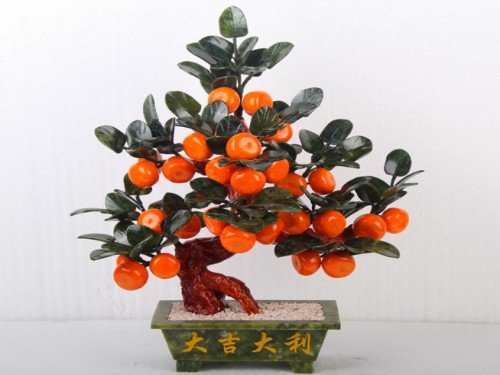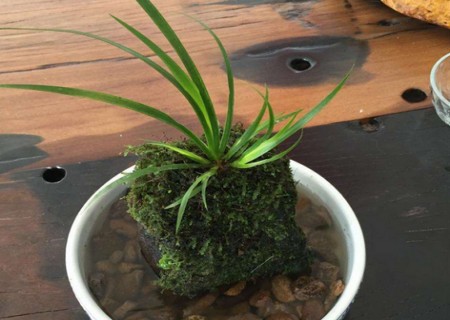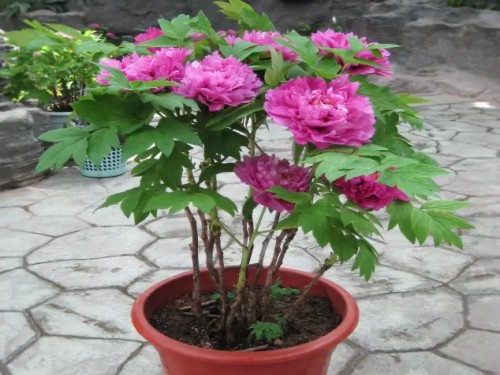Cultivation techniques of bonsai of orange trees
While visiting the botanical garden, I came across several pots of potted orange trees at the gate of the botanical garden. the small kumquat hung all over the small tree, which made people look very festive and couldn't help but want to touch these small oranges. Imagine if you can plant a few such potted orange trees in spring and summer, and taste sweet and sour oranges in autumn. It's really a pleasant thing. So how can we plant potted orange trees, and what are the cultivation techniques of potted orange trees?
Looking at the beauty of the potted orange tree, it really takes a lot of effort to plant the potted orange tree. The following editor introduces the cultivation techniques of the potted orange tree to everyone.

1. Select a container
The containers of potted fruit trees are mainly round, so that the roots can spread evenly around. At the same time, the containers need to be permeated and breathable to ensure the oxygen demand for root growth and prevent the rotting roots caused by stagnant water in the containers. Among all kinds of texture containers, sukiyaki pot is the most suitable for planting fruit trees. When using other texture containers, in order to overcome the disadvantage of poor air permeability, you can lay 5 cm thick coarse sand at the bottom of the basin, pad a layer of new tiles along the inner wall, and then fill the soil to plant trees.
2. Prepare basin soil
The basin soil suitable for fruit tree growth is generally neutral (PH value is 4.5-7.5), rich in humus sandy loam or sandy soil. When preparing, 4 parts of ripe pastoral soil, 2 parts of river sand, 1 part of plant ash, fully mixed evenly, crushed and screened. The culture soil should be disinfected before use, such as cooking disinfection, baking disinfection or medicine (1.5% formalin) disinfection.
3. Fertilizer and water management
Because the root system of fruit trees can only absorb nutrients from the basin, only the organic fertilizer in the basin can not meet the needs of the growth and development of fruit trees, so we must pay attention to fertilizer and water management during the growing period. Fertilization should be based on organic fertilizer, reasonably mixed with chemical fertilizer, mixed with rotten organic fertilizer before sprouting, with an appropriate amount of phosphate fertilizer, about 1 kg of fertilizer and water per plant to promote sprouting and blooming neatly; extra-root topdressing in the fruit setting period after flowering, 0.3% potassium dihydrogen phosphate plus 0.3% urea, sprayed twice every 15 days to promote the expansion of young fruit and the growth of new shoots. Applying phosphorus and potassium fertilizer 20-30 days before harvest, applying 40-60 grams of potassium dihydrogen phosphate in each pot, and then watering thoroughly can increase the number of fruits and improve the quality. After the fruit was harvested, the ternary compound fertilizer was applied again and watered. Before the defoliation of fruit trees in autumn, rotten soil fertilizer was applied as base fertilizer. Watering should be strictly controlled during the dormant period, so that the basin soil is only dry.
4. Pour the basin
As the nutrients in the potted soil are absorbed by the fruit trees or washed away in frequent watering, the pots should be emptied in time every 2-3 years to replace the new nutrient soil. After the soil mass is deducted upside down, cut off the 2-3 cm thick old root around the basin soil, mix the organic fertilizer and nutrient soil to fill the bottom, then bring the soil mass to the basin, and then add the fertile soil around to fill it, and pour water once.
5. Maintenance
Orange trees like sunlight, suitable for growing in fertile, loose, slightly acidic, well-drained sandy soil, relatively cold-resistant, oranges can withstand minus 2-3 ℃ low temperature. Potted tangerines should be removed from the outside in early spring in the first ten days of April (after Qingming Festival), and then pruned, according to the principle of "strong branches, light pruning, weak branches and heavy pruning", to cut off overlapping branches, withered old branches, cross branches and branches of diseases and insect pests, so as to save nutrients, ventilate and penetrate light, promote the growth of new branches, make the branches and leaves dense and moderate, and the tree shape is beautiful and symmetrical.
At the beginning of May, when the plant begins to sprout leaves and branches, it is appropriate to apply dilute fertilizer solution every 10-12 days, starting to dilute and gradually thicken. When the flowers and leaves are luxuriant in the first ten days of June, there is a large amount of water and fertilizer, that is, fertilization and water should be applied frequently, and the plants should be heart-picked in order to concentrate nutrition to promote flowers and protect fruits. Due to the limitations of flowerpots, soil and nutrition are difficult to meet the natural growth of orange trees, so potted plants should be pruned and fruits and vegetables should be pruned. In addition to applying more fertilizer and water at ordinary times, some fruits should be removed and a few fruits should be removed in the fruit-setting period after flowering.
Potted oranges should consciously cultivate multi-fruiting autumn fruits for appreciation during the Spring Festival. Sufficient fertilizer should be applied before autumn flowers from July to August to increase the rate of fruit setting. In full bloom, water and fertilizer should be slightly reduced, and when the fruit grows to the beads, it should be applied frequently. If the plant does not grow vigorously, it should be fertilized outside the root, and liquid fertilizer should be applied until winter.
Time: 2019-05-24 Click:
- Prev

Can Acorus calamus be cultured in water? How does Acorus calamus grow in water?
Acorus calamus likes Yin good wet, from this point, water culture is better than mud planting, but water culture can only soak the roots, not leaves, so that it can be placed in the flower shade, so that it is exposed to the wind, and do not expose it to the sun. The climate is hot in summer, in addition to visitors, the water basin of Gladiolus should be placed in the underworld all day to avoid the heat consuming nutrients.
- Next

Planting techniques of potted peony
Peony is a symbol of wealth, auspiciousness, nobility and elegance. Cut peony is more popular than peony. Fresh cut peony is also a kind of variety with high value and grade, but not all peonies will adapt to cut flowers. it is also necessary to carefully select better peony varieties as cut peonies.
Related
- Fuxing push coffee new agricultural production and marketing class: lack of small-scale processing plants
- Jujube rice field leisure farm deep ploughing Yilan for five years to create a space for organic food and play
- Nongyu Farm-A trial of organic papaya for brave women with advanced technology
- Four points for attention in the prevention and control of diseases and insect pests of edible fungi
- How to add nutrient solution to Edible Fungi
- Is there any good way to control edible fungus mites?
- Open Inoculation Technology of Edible Fungi
- Is there any clever way to use fertilizer for edible fungus in winter?
- What agents are used to kill the pathogens of edible fungi in the mushroom shed?
- Rapid drying of Edible Fungi

